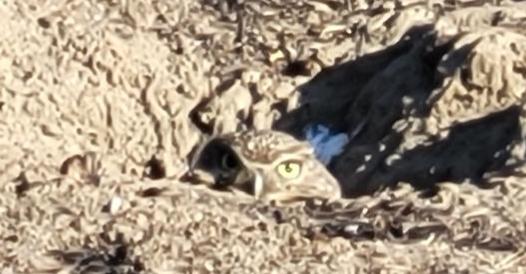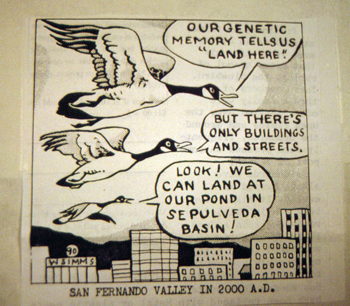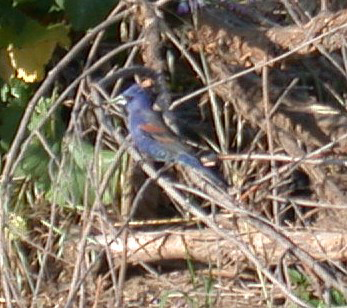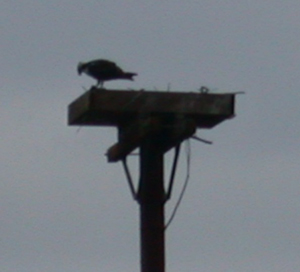 |
|||||||||||||||||
|
|||||||||||||||||
BIRDS OF THE SEPULVEDA BASIN WILDLIFE RESERVE |
|||||||||||||||||
Sepulveda Basin Wildlife Reserve Bird Checklist click here to view 112kb .pdf file |
|||||||||||||||||
Burrowing owls were common in the Sepulveda Basin in the past. Isn't it time they return?
https://www.youtube.com/watch?v=uqQxAg4muGc.
(Natural History Museum Link)
http://www.socalwild.com/2016/12/burrowing-owl-delights-students-staff-at-urban-school/1816/
A recent visitor to the Wildlife Reserve:  |
|||||||||||||||||
One hundred years ago, the San Fernando Valley was a wide open plain, dotted with farms and crisscrossed by the Los Angeles River and its tributary creeks. The Valley’s wetlands provided a haven for millions of birds traveling between breeding grounds in Mexico and Central America. Today the Valley is home to more than two million people, and most sections of the once-wild river have been enclosed in cement walls. But the Sepulveda Basin Wildlife Reserve still provides important habitat – home, food and shelter – for a variety of birds. |
||
The Wildlife Reserve is land that the City of Los Angeles has set aside for the protection of native animals and plants. This 225-acre refuge includes the Wildlife Lake, large open areas, a small pond and a flowing creek. Canada geese graze in nearby fields, long-billed shorebirds probe for tiny animals in the mud along the edge of the water, and birds of prey hunt for rodents, reptiles and small birds in the grassy uplands. |
||
More than two hundred species of birds have been seen at the Wildlife Reserve. |
||
The Public Recreational Use Plan for the Sepulveda Basin Wildlife Area (1987) calls for the City Recreation and Parks Department and the U.S. Army Corps of Engineers, in cooperation with the California Department of Fish and Game, to “seek to establish at least 60 acres of additional permanent foraging sites … within the Sepulveda Basin for the purpose of maintaining Canada goose historic wintering populations.” |
||
In addition to providing secure foraging grounds for migrating Canada and other geese, the South Reserve is known to support the Federally-listed least Bell’s vireo, a neotropical songbird which breeds in southern California’s riparian areas.
Click
HERE for link to YouTube video to hear the vireos. Another uncommon bird in southern California that breeds in the Wildlife Reserve is the blue grosbeak (image below). |
||
There are many birding opportunities in the Wildlife Reserve because there are different habitats and plant communities that attract different birds – not to mention all the water! With plenty of parking, easy (wheel-chair accessible) access, level walking and good vistas, visiting at any time of year can be very rewarding. |
||
“Birds of the Sepulveda Basin Wildlife Area” by Daniel Kahane, Melanie Ingalls, Sylvia Gallager, Kimball Garrett, Ada and Frank Graham. Illustrations by Jonathan Alderfer. click here to view 12.59mb .pdf file |
||
HISTORIC NOTE By Dan Cooper |
||
A History of the Cooper Ornithological Club, written in 1929 by Harry Swarth (who owned a big ranch in current-day mid-Wilshire, L.A. )is pretty interesting. It had some great photos and descriptions of pre-railroad/aquaduct San Fernando Valley , which was apparently a favorite collecting area of Daggett, Howard, Grinnell, and the rest of the early SoCal collectors. Apparently, Tujunga Wash dominated the valley with broad alluvial bands running south to the willow and cottonwood groves along the river at the northern base of the Santa Monica Mountains . Lots of dry-land wheat fields. Present-day Big Tujunga Wash (in the vicinity of Foothill Blvd. above Hansen Dam) probably approximates it fairly well, and is essentially the last remnant. Also mentioned are vagrant Sage Thrasher and Lark Bunting, "classic" rare visitors to San Jacinto Valley , which is probably the best representation left of the habitat (including the dry-land grain fields!). Also mentioned are Burrowing Owls, Vesper Sparrows , and "Black-tailed" Calif. Gnatcatchers.
|
Phainopepla
February / March 2023 They often form circular groups to herd and capture fish. Occasionally a tagged pelican is encountered, and if the tag is readable, it is easy to obtain information on where the bird was banded. Such a pelican was recently sighted at the Los Angeles River in the Sepulveda Basin with the tags visible on the bird’s back. It is important to note the tag and lettering color as well as the code. For example, this tag was black with yellow characters. The bird also has a ring on its right leg, but that was too far away to read. Tagged or ringed birds may be reported at www.reportband.gov by reporting the tag data plus information on location, whether the bird was alive, etc. This is a U.S. Geological Survey and Canadian Wildlife Service program in cooperation with many agencies, organizations and individuals. Data from the program is used for purposes including monitoring bird population and migration patterns, restoring endangered species, and many other environmental studies. Note that smaller birds are typically just banded on a leg. Even then, it may be possible to get a photo which shows the information. When a bird is reported, within a few days a certificate is emailed back indicating when and where the bird was banded. In the case of our pelican number 8J2 in the LA River - it was tagged when too young to fly near Bancroft, Idaho on July 28, 2021. This is obviously its second trip south, a distance of about 680 miles as the crow (or in this case, pelican) flies. It is wonderful to see the American White Pelicans arriving at the Sepulveda Basin to spend the winter. They travel over some very inhospitable territory to get here, and it is crucially important to protect them from hazards in our urban environment. A major risk for the pelicans as well as other swimming and diving birds is fishing line and tackle, which cause thousands of bird deaths yearly. For this reason fishing is completely prohibited at the Sepulveda Basin Wildlife Lake, and receptacles for proper disposal of line are provided at Lake Balboa. Unfortunately we continually see cases of entangled birds and must rely on people being responsible with their fishing line and tackle as well as observing legal restrictions. You can usually see American White Pelicans at the Sepulveda Basin Wildlife Lake from November through March - their arrival and departure dates are somewhat variable. San Fernando Valley Audubon Society (sfvaudubon.org) leads trips to the wildlife area on the first Sunday of each month at 8 am, plus a family/beginners trip on the second Saturday at 9 am (October to March). Check www.sfvaudubon.org for directions and more details, and join us for a trip to this most amazing wildlife area! |
||





